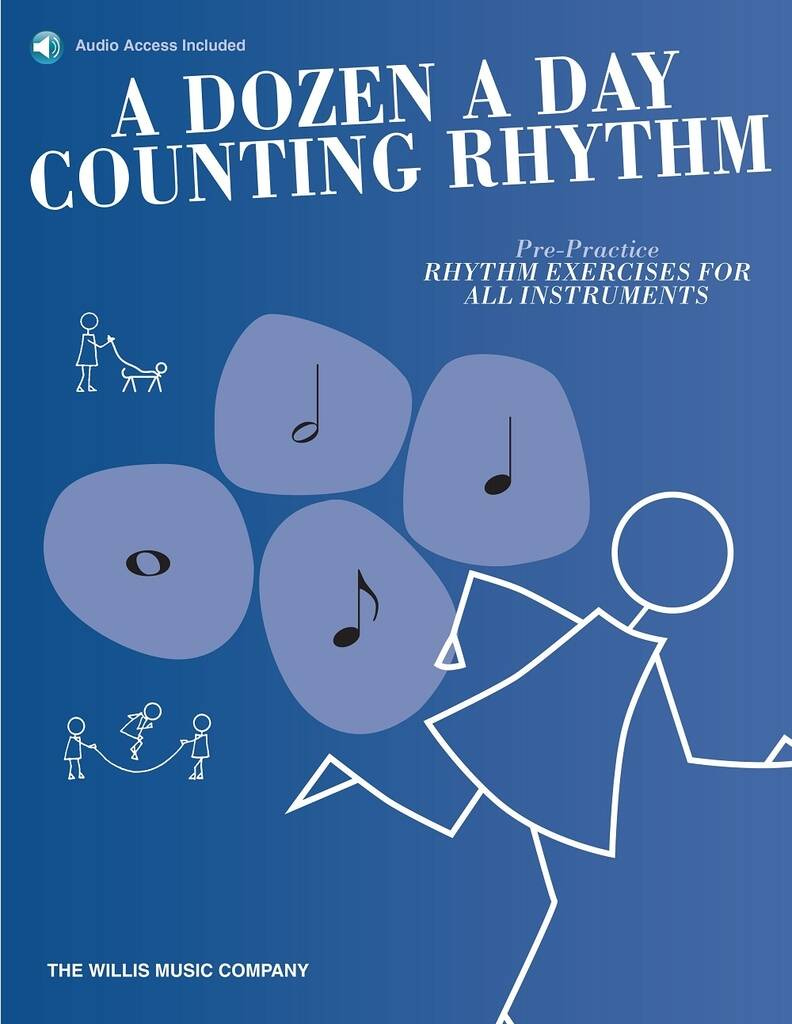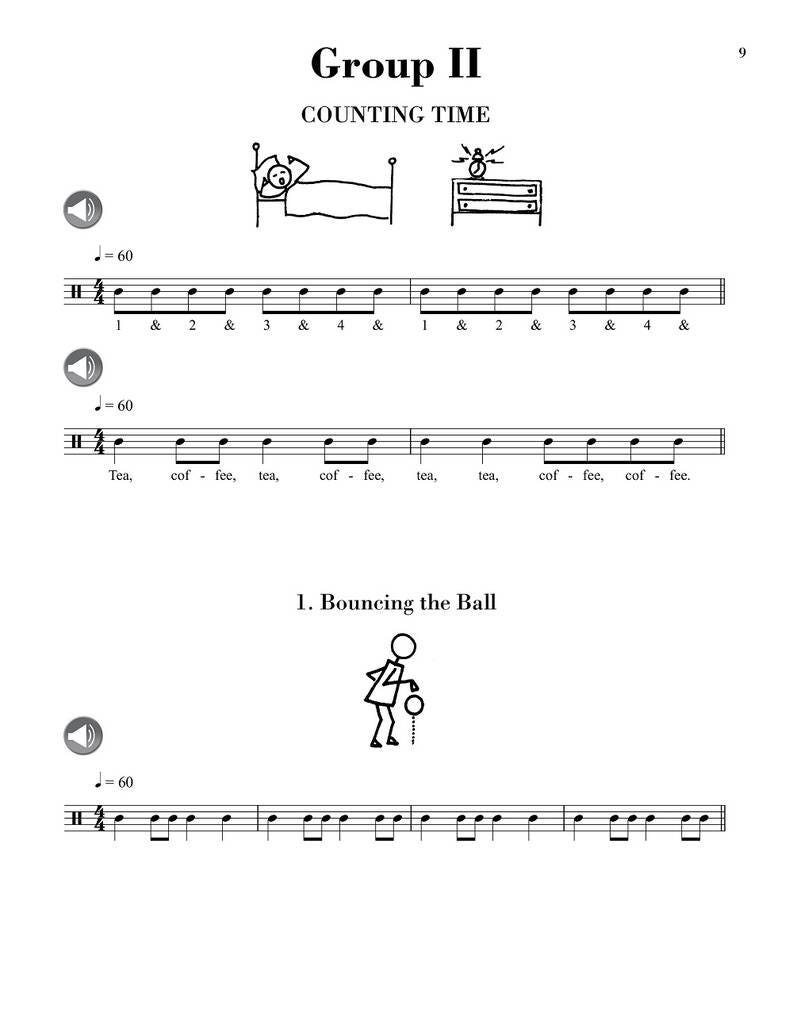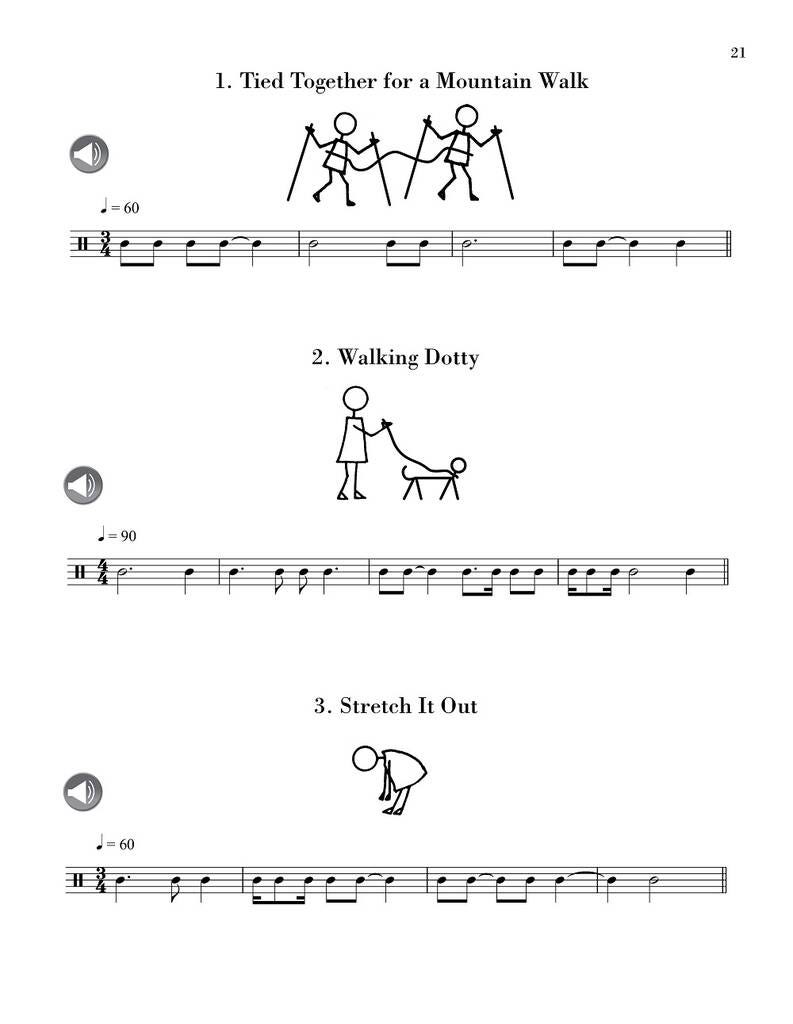Sparking Creativity and Confidence with 'A Dozen A Day: Counting Rhythm'
A Joyful, Practical Resource for Building Rhythm Skills and Inspiring Student Composers
As someone who already loves using Edna Mae-Burnham’s A Dozen A Day in my teaching, I was excited to discover the new A Dozen A Day: Counting Rhythm from Willis Music Company. This latest addition to the series takes everything that makes A Dozen A Day a studio staple—its playful illustrations, clear progression, and engaging exercises—and applies it directly to rhythm. For some students, rhythm can be one of the most challenging aspects of music, but this book transforms rhythm practice into something accessible and enjoyable for learners of any instrument.
Thoughtful Structure and Engaging Features
The structure of Counting Rhythm is particularly effective. It’s organised into progressive groups, each featuring twelve short rhythm exercises that can be clapped, tapped, or played. The groups are divided as follows:
Group 1 introduces semibreve (whole note) and rest, minim (half note) and rest, crotchet (quarter note) and rest, all within simple quadruple metre.
Group 2 adds quaver (eighth note) values, both in pairs and groups of four, as well as single quaver notes and rests.
Group 3 expands to simple duple and triple metres and introduces semiquaver (sixteenth note) values, both in groups of four and beamed with quavers.
Group 4 brings in dotted crotchet and dotted minim note values and rests, beamed dotted quaver-semiquaver patterns, tied notes, syncopation, and compound metres.
Group 5 features triplet quaver and crotchet groupings, as well as the single semiquaver rest, rounding out a comprehensive progression of rhythmic concepts
The familiar stick-figure illustrations add a sense of fun and continuity, while the included demonstration audio allows students to practice at their own pace, adjusting the speed as needed and always keeping time with a steady metronome pulse. This flexibility makes it easy to tailor rhythm practice to each student’s needs, whether they’re beginners or preparing for exams.
Minor gripes
I do have a couple of minor gripes with the structure, but I can see why the authors have chosen it, as it’s very conventional and most teachers will find that it works well in their studio. Personally I’ve slightly altered my approach to teaching rhythm after taking a bit of training in Music Learning Theory, which I find really helps students to internalise rhythm in a more effective way. With that in mind I’d prefer if Simple Duple and Triple metres were introduced earlier, and Quadruple metre was introduced later. I would also prefer to use Professor Gordon’s rhythmic Solfege syllabus “Du-De” (simple) and “Du-Da-Di” (compound) over the “1 & 2 & 3 &” used here, as I find it is easier for students to internalise. But that’s easily fixed, and with the addition of supplementary MLT rhythm resources, I’ve found that the book still works well in my studio and students appreciate being able to continue the series.
Inspiring Creativity Through Rhythm
One of my favourite ways to use rhythm resources like this is to inspire creativity in my students. I typically begin by having students focus solely on rhythm, clapping through exercises until they find a pattern they enjoy. From there, we improvise adding pitches—often limiting the selection to a particular scale or pentascale that fits their current lesson material. This process not only reinforces rhythmic accuracy but also gives students a sense of ownership and excitement as they see how rhythms can be transformed into original melodies.
From Improvisation to Composition
Once students have chosen their rhythms and pitches, I might encourage them to write out their compositions. Some students love to expand on their ideas, adding left-hand accompaniments or even crafting lyrics to go along with their new melodies. The possibilities are endless, and this approach turns rhythm practice into a springboard for composition, improvisation, and deeper musical understanding. It’s always rewarding to see students light up as they realise they’re not just practicing—they’re creating.
A Versatile Resource for Rhythm Skills and Creativity
Overall, A Dozen A Day: Counting Rhythm is a joyful, practical resource that I’ll be reaching for again and again. It covers everything from basic note values and rests to more advanced concepts like dotted notes, ties, syncopation, and triplets. Whether used for lesson warm-ups or as a creative launching pad, this book has a lot to offer teachers and students looking to build strong rhythmic foundations and spark musical creativity in every lesson.
Have you tried A Dozen A Day: Counting Rhythm in your studio, or do you have other favourite ways to teach rhythm? Share your thoughts and experiences in the comments below—I’d love to hear how you inspire rhythmic creativity with your students!






Your review came out at the same time as Andrew's review.